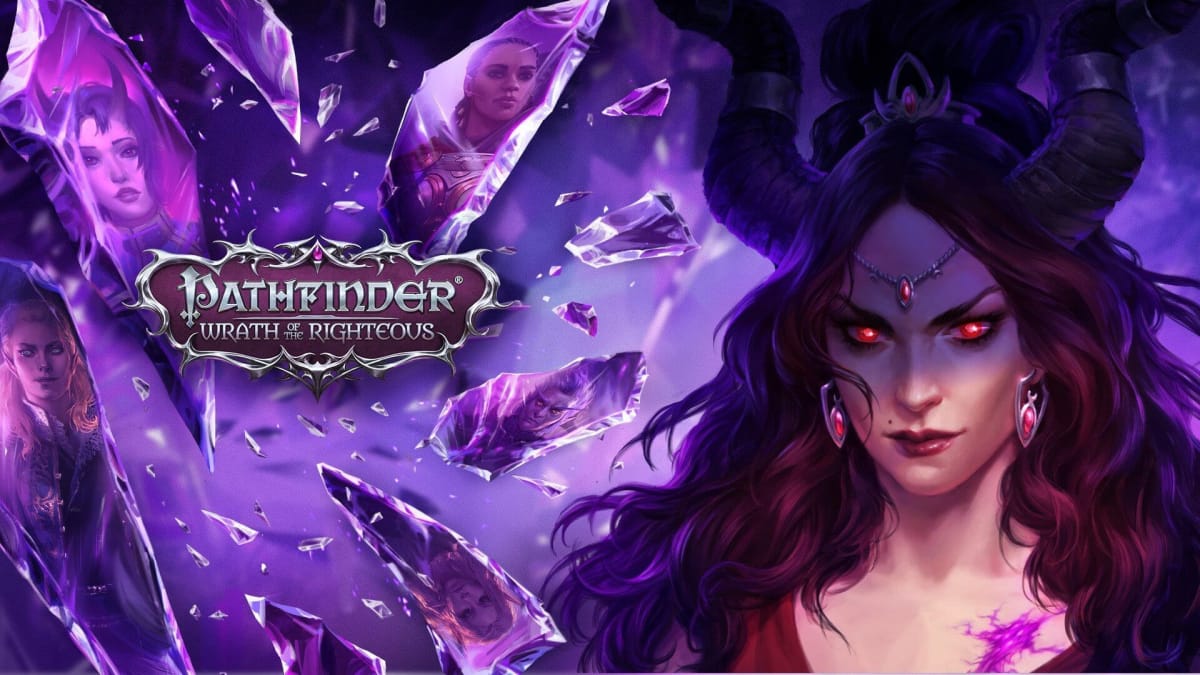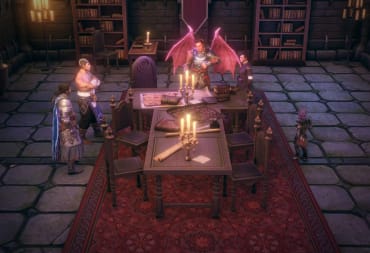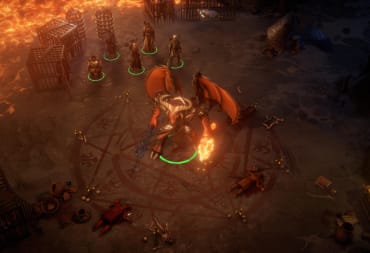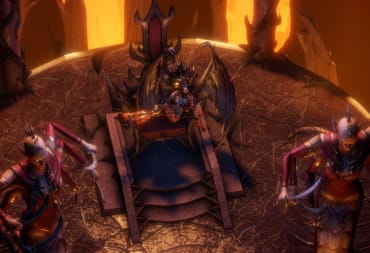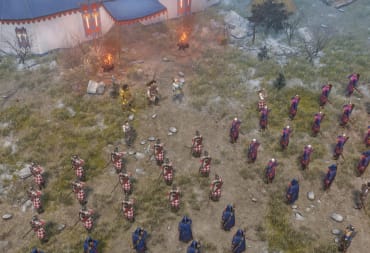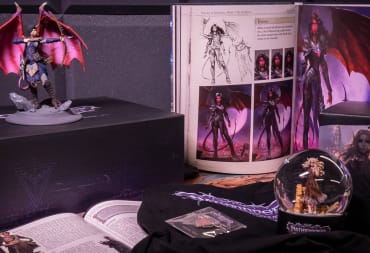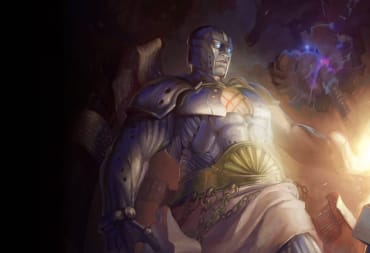Pathfinder as a tabletop roleplaying game is an odd beast, as publisher Paizo went for a 3.5-styled, heavy crunch kitchen sink approach to their system. For well over a decade it has been a major fixture of tabletop gaming, and it was a treat to finally see a video game version a few years back with Kingmaker. Now though, developer Owlcat Games puts out all the stops with their second Pathfinder title, Wrath of the Righteous.
In a lot of ways, Wrath of the Righteous is as ambitious as you get in the genre; it’s an epic tale with a cinematic flair we rarely see in the world of isometric RPGs. It adds more to its systems, despite the amount of bloat it can carry. It ups the production values ten-fold and adds more new mechanics that it possibly can hold. And it is, without a doubt, the best isometric RPG to come out since Planescape: Torment.
The Little Things that Count
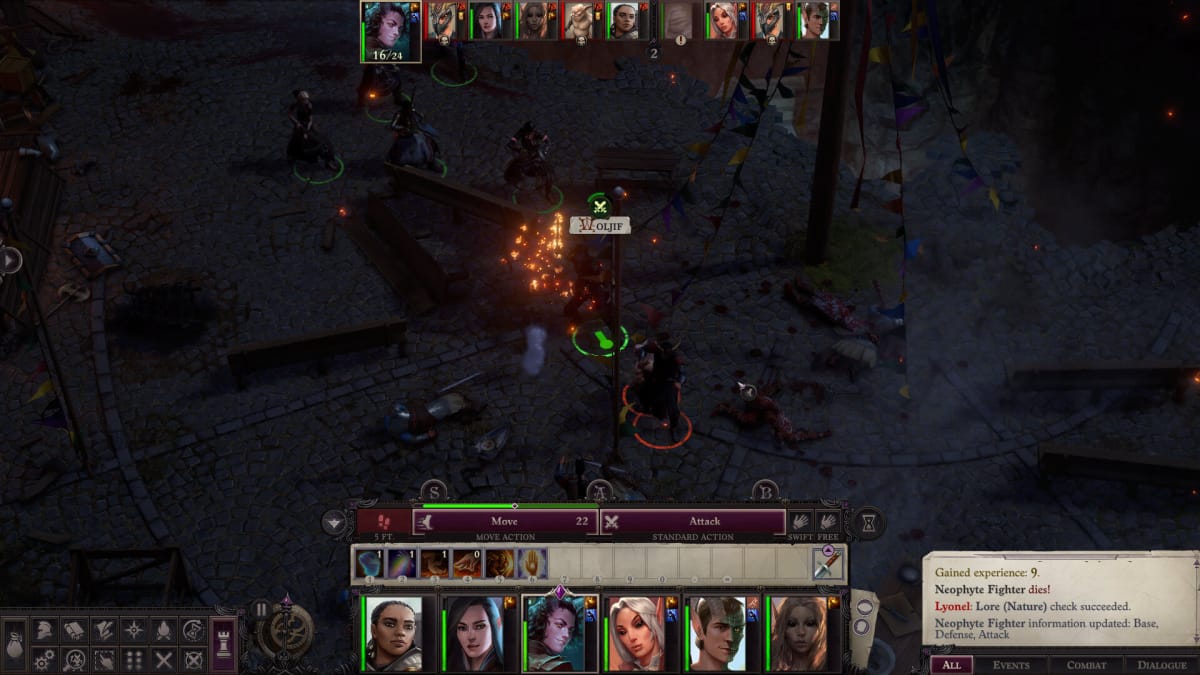
Those in know understand the pedigree of Planescape: Torment here, arguably the best isometric RPG ever made, and one of the best-written games of all time. Wrath of the Righteous doesn’t necessarily reach that lofty standard; there are some narrative missteps and personal nitpicks, of course. Still, in terms of how genre-defying it is from a mechanics and production standpoint, Wrath of the Righteous successfully showcases that this niche genre of RPGs can be more than what we expect.
Anyone familiar with the isometric RPG genre will fit snugly into the rhythm of Wrath of the Righteous. You create a character, recruit a party of NPCs, gain experience, and level up as the narrative progresses while making dialogue choices that affect the world around you. Nothing there is groundbreaking specifically; it is the little additions to the gameplay that allow Wrath of the Righteous to stand out in the RPG space. Heck, it even stands distinctly from Owlcat’s previous Pathfinder game, Kingmaker.
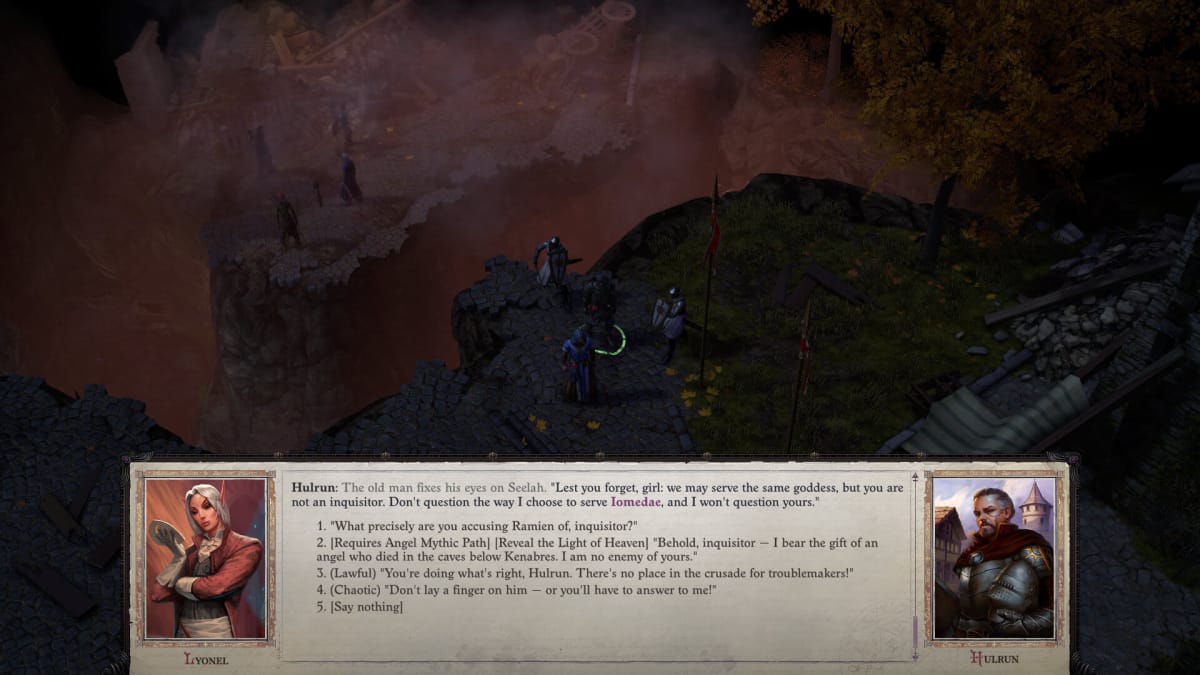
A lot of it comes down to upgrades to the design. I mentioned previously that the addition of a 360° camera control was both innovative and frankly a long-needed addition to isometric RPGs. Along with that, we have multiple graphical and visual improvements used throughout. Characters are more detailed models, environments have better lighting, and more complex layouts. Fights now feature some ragdoll physics, where enemies will be strewn across the map in sometimes comical ways. It is a bunch of little changes like that that enhance the experience, heightening the tension and the narrative.
This is punctuated by the cinematic presence that Wrath brings to the table. There are some long, in-engine cutscenes that heighten the drama immensely, smaller moments of uninterrupted character sections, be it a simple hug or a bitter betrayal, that punctuate the action around you. Unlike Kingmaker, Wrath of the Righteous has a story to tell, and they want the player to be witness to these small nuggets of characterization.
Is it all perfect though? The biggest failing is perhaps just budget in the end, as many of these interactions lack any voice acting, instead opting for animations and dialogue bubbles. It works most of the time, but there are moments where it simply falls flat and you lose any emotional connection it may have. The point though is the attempt was made, and when it does work, Wrath of the Righteous rivals any of the big-budget roleplaying experiences put forth by the likes of CD Projekt Red and BioWare quite easily.
Great Power, Great Responsibility
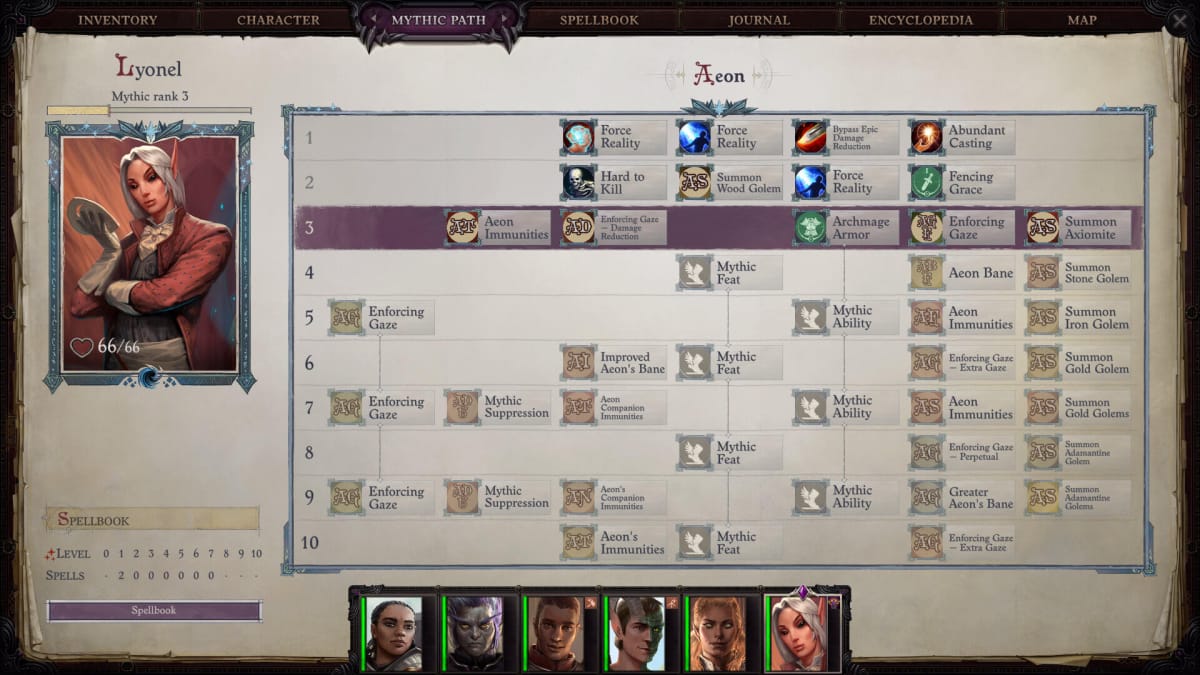
New additions to Wrath of the Righteous are more mechanical choices for the player, but welcome ones for sure. The biggest mechanic is the mythic path; story-dependent decisions that grant you mythical powers and abilities to fight against the demonic hordes. There are 10 different paths to choose from, each with its own roleplay flavor and style, and they more than makeup for the game’s really steep power creep.
It is no joke either the amount of care went into this one mechanic. The list of powers given to you is just as exhaustive as your character classes; some of them even dependent on what class you did pick. Others are directly tied to your chosen mythic path, changing the nature of how you play the game. The Aeon, for example, is a judge and arbiter who can summon golems and manipulate time. The Azata mythic path is all about freedom and choice and gives you a free pet dragon companion. The Lich is a clear fan favorite, allowing you to raise certain characters from the dead to fight for you as companions.
Another change that ties into mythic paths is the less restrictive alignment options for roleplay. Kingmaker would often lock you out of certain dialogue choices based on alignment. That has been changed, with all options now available. What is restricted in some dialogue options based on your mythic path. Each path, save for three of them, need to be unlocked before it can be used; failing to do so, along with selecting a mythic path, can lock you out of certain choices in the game. It is less restrictive than Kingmaker, and a clever way to tie in roleplay choice with the new mechanics.
A Long, Hard Battle
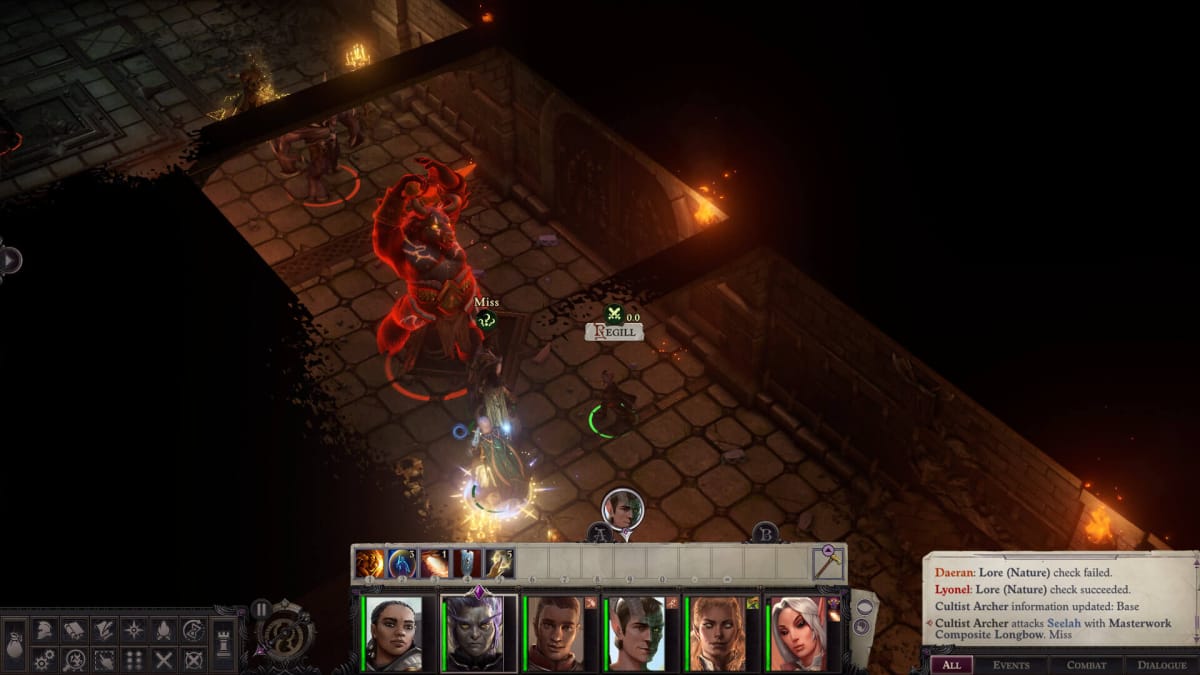
Wrath of the Righteous is explosive out of the gate, with pretty difficult fights within the first two hours of play. Enemies are noticeably tougher and fights are often longer and more dragged out, especially in narrative moments. Wrath compensates for this in a few ways; for one, you get access to a ton of funds and magical equipment earlier than you did in Kingmaker. The mythic paths give you noticeable boosts in power, and your companions are also more specialized and geared for survivability so long as you fight smart.
Much of the game is focused on this more militarized action. The other added mechanic is a quasi-tactical army system that borrows heavily from games like Might and Magic and Kings Bounty. You gather an army of troops to fight off demonic armies in the field, capture strongholds and slowly move your own basecamp north on a map. You do this a few times in Wrath of the Righteous, and while the system is cleaner than the Kingdom management game in Kingmaker, it suffers from some problems.
The biggest problem is time. It simply takes too long to build up enough forces to stand a chance against the demon armies. Battles are really long, some lasting over 100 turns, and often boil down to standing in one place and constantly hitting the enemy with a click of the button. There are some tactical choices to make here, but they are drowned out by a fair amount of tedium and worse, necessary gameplay to advance the plot.
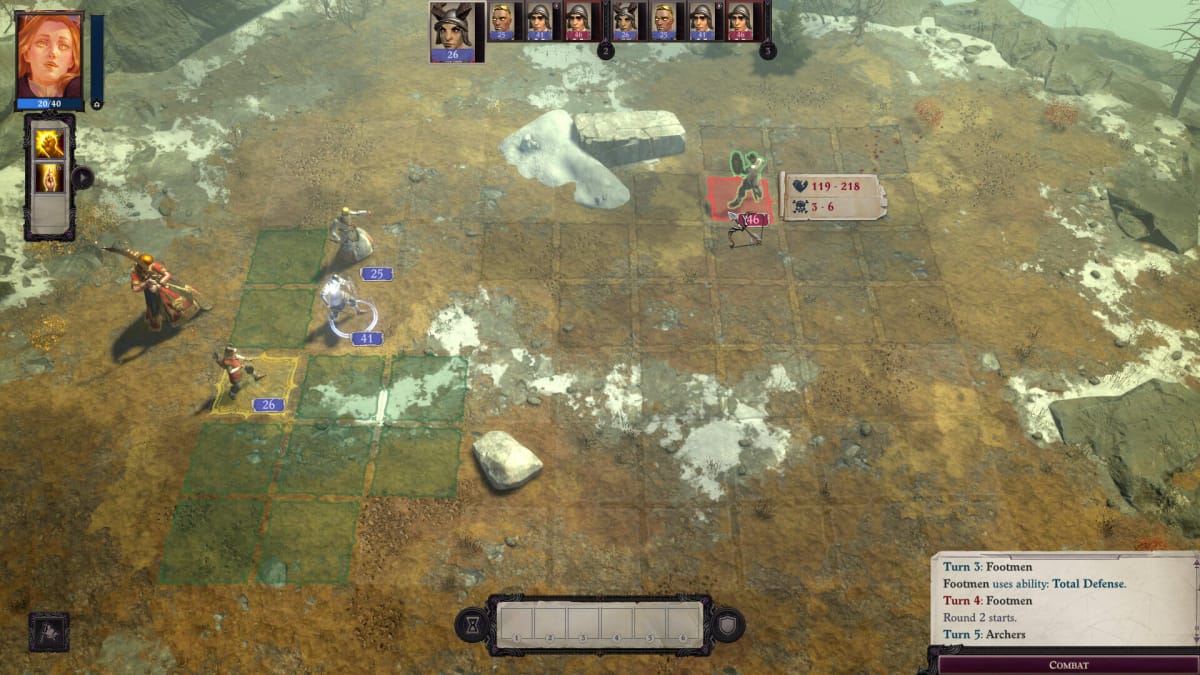
The army system doesn’t feel right next to the game’s sense of urgency. A lot of the pacing is changed from Kingmaker, and it leads to a lot of the narrative shifts we see in Wrath of the Righteous. Kingmaker was a slow-paced, less epic story that focused on a standard rise to power, with a lot of optional side content and throwback questing from the likes of Baldurs Gate.
In contrast, Wrath is linear, with less side content and exploratory scenes attached. There is a sense of urgency in the plot that follows a simple pattern from point A to B and directly sets up the player character in the first hour as being a chosen one archetype to repel the demonic invasion.
Just because the game is more linear doesn’t mean it’s bad or anything. In fact, this makes the narrative of Wrath, a more epic high fantasy tale, a lot more accessible to general audiences or more casual RPG players. If I were being honest, I prefer the more subdued narrative Kingmaker had, but there is no denying the sense of power surging over you when you see your army rise victoriously after long, hard battles against impossible odds.
The Pathfinder Problem
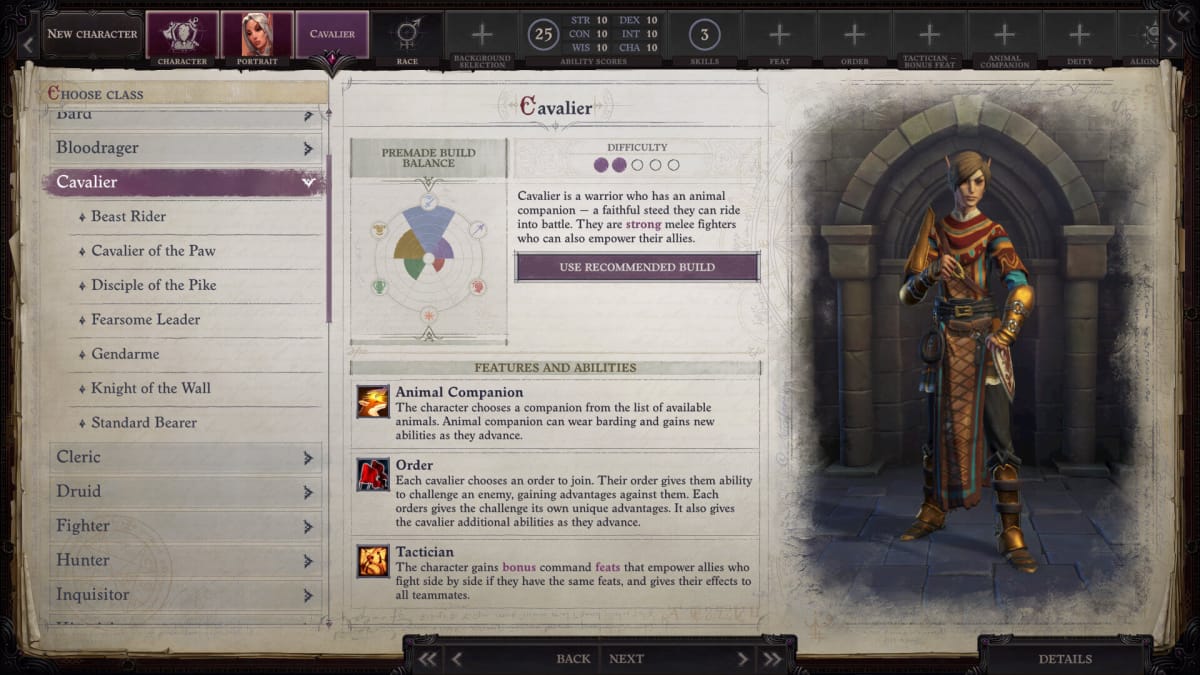
That accessibility is really only hampered by two things, one that is more personal, another unavoidable. The personal problem is the quintessential pathfinder problem of content bloat; Owlcat went big with Wrath of the Righteous, but that also included more classes, races, and characters to contend with. Companions-wise they work, even the more secret companions tied only to mythic paths. Races only see three additions, but the sheer amount of options and combinations given to the play is frankly daunting to anyone unfamiliar with the tabletop series.
In total, there are 25 classes to pick from, each with six different archetypes that change up the class. Not counting prestige classes, you have 150 different class styles to choose from, with mythic powers thrown on top of this. Owlcat tries to compensate by offering a rating system of difficulty for each class, and even visually shows the changes and breakdown of every class and archetype available. Even then, for veterans, it will lead to much analysis paralysis, while those less familiar with the tabletop game might find themselves gimped early on by some of their choices just due to the game’s steeper difficulty curve.
That is a more personal issue and has been a problem that has plagued Pathfinder for years. What plagues Wrath of the Righteous more is the number of bugs that still reside in the game. To be clear, Wrath is stabler than the launch of Kingmaker, but some of the bugs that I encountered have been close to game-breaking. One, in particular, kept me stuck in our home base, forcing me to reset a save hours earlier in the game to just escape the room I was in.
Bugs will be patched out eventually, but it is a bit of a warning in the end that you will encounter some issues from time to time.
Final Thoughts
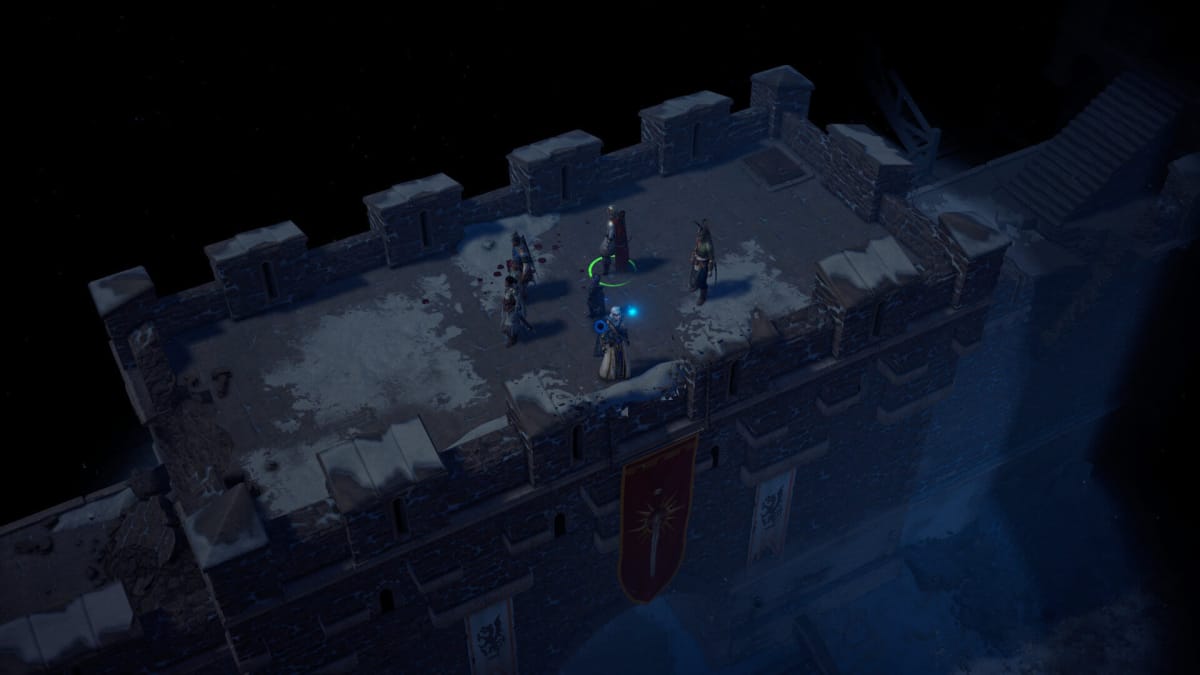
When the final foe is slain and you stand atop the demonic corpses of your enemies, Pathfinder: Wrath of the Righteous is a triumph that succeeds in just about every way imaginable. The mechanical changes, narrative focus, and typical but welcome epic battle of good versus evil make it a must-own for not only RPG fanatics but a worthy contender for one of the best games of the year. Even with the issues of bugs or bloat, Wrath of the Righteous transcends this into a wonderful, well-made game that makes me excited to see what Owlcat does next.
TechRaptor reviewed Pathfinder: Wrath of the Righteous on PC using a copy provided by the publisher.
Review Summary
Pros
- Stellar Good vs Evil Narrative
- Tons of Class Options and Roleplay Choices
- Excellent Blend of Classic and Modern Isometric RPGs
- Increased Cinematic Qualities and Production Values
- Mythic Paths as a Whole
- Voice Acting, Music, and Sound Design are Excellent
Cons
- Still Filled With Some Game Breaking Bugs
- Tons of Class Options May be Daunting to Some Players
- Army Mechanic is a Bit Tedious
Have a tip, or want to point out something we missed? Leave a Comment or e-mail us at tips@techraptor.net
